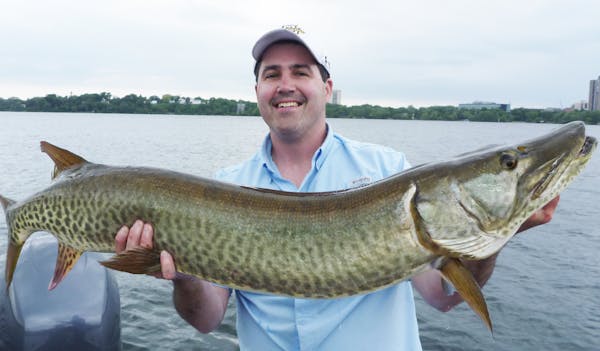Minnesota's lake sturgeon recovery has been remarkable.
Once nearly wiped out from overfishing and pollution, populations of the 100-million-year-old prehistoric fish have rebounded in recent years, thanks to reduced pollution waters, removal of dams to restore spawning areas and restocking efforts. Strict fishing regulations also have helped.
Now anglers are reaping the benefits. On Tuesday, a new catch-and-release sturgeon season reopened in most of the state, giving anglers a chance to catch the largest freshwater fish in North America, one that swam when dinosaurs still roamed the land.
"We have the opportunity to do this now because of the restoration efforts around the state over the past 20 years," said Al Stevens, Department of Natural Resources (DNR) fisheries program consultant. "We have these growing sturgeon populations."
The new catch-and-release season on inland waters began in March, but closed from April 15 to June 15 to protect spawning sturgeon. The new opportunity means anglers can catch and release lake sturgeon on inland waters like Otter Tail and White Earth lakes and the Littlefork, Bigfork and Kettle rivers — all of which have good numbers of the scaleless, smooth-skinned fish. Anglers can also catch and release lake sturgeon on border waters such as the Red, St. Louis, St. Croix and Mississippi rivers.
The season structure is different elsewhere, including on Lake of the Woods and the Rainy River, the top sturgeon fishing spot in the state. (Sturgeon fishing there is closed until June 30, and a harvest season opens July 1.) Anglers should check DNR regulations.
Stevens said the DNR isn't worried about hooking mortality from the new catch-and-release season.
"We expect it to be very low," he said. "They are a very hearty fish."
The only waters where anglers can keep sturgeon is on the Rainy River system and part of the St. Croix River. They can keep just one sturgeon yearly, and must buy a tag and register their catch. Again, check regulations for details. Last year, anglers bought about 3,400 tags, and registered just 258 sturgeon.
The DNR says it will be many years before lake sturgeon have recovered enough to allow for expanded harvest.
Doug Smith • 612-673-7667

Oregon transfer guard Rigsby takes official visit with the Gophers

US government agrees to $138.7M settlement over FBI's botching of Larry Nassar assault allegations

